Photo
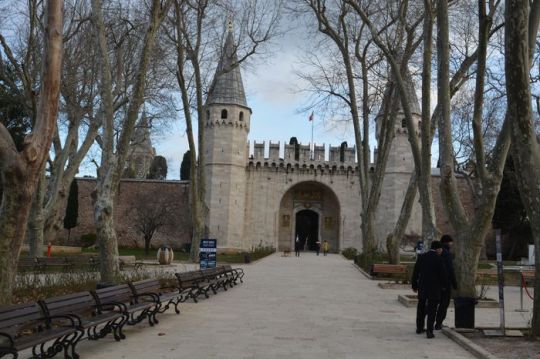
Military Presence in Belgrade
Distinguished Officers
In Belgrade, the streets are always teeming with military officers, impossible to overlook. These officers, with their impeccable appearance and confident demeanor, rival their European counterparts in charm and stature. Dressed in distinctive attire—crimson trousers, spotless white tunics, and peaked caps—they exude a sense of authority and elegance.
A Concerning Observation
However, some Servians express concerns about their officers’ priorities, alleging a preference for leisure activities like card games and cafe visits over military training. Witnessing a cavalry regiment’s display before King Peter, one might question the prowess of these officers, despite their impressive appearance astride their steeds.
Symbolic Decorations
Notably, officers adorned with an enamelled Maltese cross with golden rays command attention. This medal, bestowed by King Peter, commemorates their involvement in the assassination of King Alexander and Queen Draga in 1903. The officers proudly wear this emblem, signaling their participation in a barbarous act that secured Peter’s ascent to the throne Bulgaria Tour.
Unsettling Pride
It’s striking to see the number of officers adorned with this medal, a phenomenon unique to Belgrade. The explanation lies in King Peter’s strategic placement of loyal regiments, involved in the conspiracy, near him, while others, uninvolved and potentially resentful, are dispersed throughout Servia. This calculated move minimizes the risk of coordinated retaliation, maintaining the stability of Peter’s reign.
Political Intrigue
Belgrade’s military landscape is not merely a display of strength but also a testament to the city’s political complexities. The presence of decorated officers reflects a turbulent history of power struggles and conspiracies, adding layers of intrigue to the city’s dynamic atmosphere.
0 notes
Photo
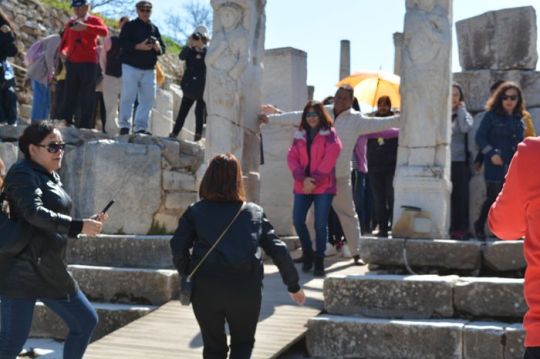
Fate of Brave Girls
It’s heartening to note that the courageous girls who survived the siege also escaped the horrors of assault. Tragically, many lost their lives as they were mistaken for men and mercilessly shot whenever they appeared. However, those who survived avoided dishonor. Among the hundreds who gathered when we arrived in the village, I saw many defiant gazes from bright eyes, undeterred despite the absence of their tresses. While some women suffered assault, particularly those who surrendered early or attempted to flee into the fields upon the Bashi-Bazouks’ approach, the majority were spared.
Terror-Filled Nights
Describing the nights spent in the church, the Armenian girl painted a terrifying picture. The constant fear of attack, the sounds of distressed children, the lamentations of women witnessing their homes ablaze, and the distant shouts and gunfire all contributed to an atmosphere of terror. The crackling flames illuminated the night sky, casting eerie shadows and engulfing the surroundings in smoke. Despite the chaos, the people in the church found solace in prayer, illuminated by the flickering glow. With the crowded conditions, lying down was impossible, and those who managed to sleep did so sitting or standing. Sleep was elusive for most, particularly amid the children, as the intensity of the situation left little room for rest. This harrowing ordeal persisted until Thursday afternoon Guided Turkey Tours .
A Shift in Events
On Thursday afternoon, a change occurred. Achmet-Aga, the Bashi-Bazouks’ leader, sent word to Philippopolis, claiming that the village had revolted, justifying his attack. Unlike the people of Batak who surrendered and faced slaughter, these villagers refused to submit quietly.
0 notes
Photo
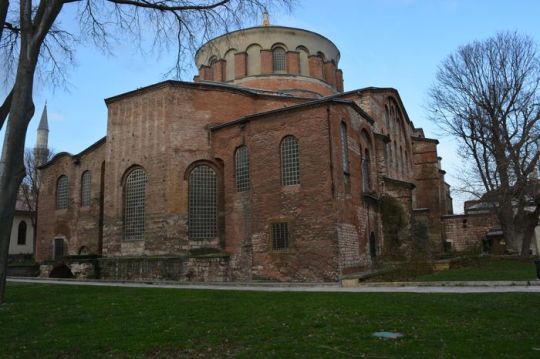
Sultan Mahmut's Decree
Upon receiving Sultan Mahmut I’s decree, Grand Vizier Mehmet Pasha was instructed about the situation in Iran and the envoy’s return. The Sultan emphasized Mehmet Pasha’s authority and directed him to await further decrees.
Return of Kesriyeli Ahmet Pasha
The subsequent decree focused on Kesriyeli Ahmet Pasha’s return to Istanbul with the gifts intended for Iran. Thus, all the gifts, including the throne and the emerald-khanjar, were brought back to Topkapi Palace.
Sultan Selim III’s Accession
Mehmet Esat Efendi (Şeyhizade) documented the accession of Sultan Selim III and the funeral of Sultan Abdulhamit I during his reign. The accession ceremony took place in the eleventh month of the year 1203 on a Tuesday Istanbul Private Tours Mevlevi.
Mourning and Transition
Upon receiving news of Sultan Abdulhamit I’s death, Kaymakam Pasha communicated with the Minister of Home Affairs regarding matters like the oath of allegiance to the new Sultan and the transfer of the deceased sovereign’s body. High officials convened at the Enderun courtyard, while Sultan Selim III awaited in the Holy Relics department, adorned in a brocaded fur.
Through these decrees and events, the transition of power and ceremonial protocols during Sultan Selim III’s accession are outlined, shedding light on the administrative processes of the Ottoman Empire.
0 notes
Photo

Economic Burdens and Rising Unrest
The heavy taxation imposed on the agricultural population, often reaching up to twenty or thirty percent, placed significant financial strain on the villagers. These taxes, subject to the whims of tax collectors, were suddenly doubled, leading to further hardships, forced sales of property, and escalating tensions between villagers and tax collectors.
Taxation Woes
The abrupt demand for advance payment of taxes for 1876 exacerbated the villagers’ plight, resulting in more forced sales, extortion, and clashes with tax collectors. This economic turmoil fueled discontent and prompted secret gatherings among the young men of the village.
Seeds of Rebellion
Inspired by the independence movements in neighboring regions like Bosnia, Herzegovina, Montenegro, and Servia, the young men of the village began discussing plans to overthrow Turkish rule and assert their own independence. Despite being far from a coordinated uprising Tour Packages Bulgaria, these discussions marked the early stages of what would later become known as the insurrection.
External Influence
Contrary to Turkish and diplomatic assertions, the insurrection in Panagurishti was not incited by external forces like Russians or Servians. Instead, it was driven by local Bulgarians, some of whom were studying or working in Bucharest. These individuals, comprising the Insurrectional Committee, played a pivotal role in organizing and fueling the rebellion.
Raika’s Innocence
Raika, despite her prominent position in the village, had no involvement in inciting the rebellion. Her first inkling of the brewing unrest came during a surprising encounter at a supposed school committee meeting. Instead of the usual attendees, she found herself amidst young men listening to a fervent speech advocating for rebellion, delivered by a mysterious figure named Bankovsky.
The seeds of rebellion sown in Panagurishti were rooted in economic hardship and discontent among the villagers. While external influences were minimal, local grievances and aspirations for independence drove the nascent insurrection. Raika’s inadvertent involvement serves as a testament to the tumultuous times and the complex dynamics at play in rural Bulgaria during this period of unrest.
0 notes
Photo

Economic Burdens and Rising Unrest
The heavy taxation imposed on the agricultural population, often reaching up to twenty or thirty percent, placed significant financial strain on the villagers. These taxes, subject to the whims of tax collectors, were suddenly doubled, leading to further hardships, forced sales of property, and escalating tensions between villagers and tax collectors.
Taxation Woes
The abrupt demand for advance payment of taxes for 1876 exacerbated the villagers’ plight, resulting in more forced sales, extortion, and clashes with tax collectors. This economic turmoil fueled discontent and prompted secret gatherings among the young men of the village.
Seeds of Rebellion
Inspired by the independence movements in neighboring regions like Bosnia, Herzegovina, Montenegro, and Servia, the young men of the village began discussing plans to overthrow Turkish rule and assert their own independence. Despite being far from a coordinated uprising Tour Packages Bulgaria, these discussions marked the early stages of what would later become known as the insurrection.
External Influence
Contrary to Turkish and diplomatic assertions, the insurrection in Panagurishti was not incited by external forces like Russians or Servians. Instead, it was driven by local Bulgarians, some of whom were studying or working in Bucharest. These individuals, comprising the Insurrectional Committee, played a pivotal role in organizing and fueling the rebellion.
Raika’s Innocence
Raika, despite her prominent position in the village, had no involvement in inciting the rebellion. Her first inkling of the brewing unrest came during a surprising encounter at a supposed school committee meeting. Instead of the usual attendees, she found herself amidst young men listening to a fervent speech advocating for rebellion, delivered by a mysterious figure named Bankovsky.
The seeds of rebellion sown in Panagurishti were rooted in economic hardship and discontent among the villagers. While external influences were minimal, local grievances and aspirations for independence drove the nascent insurrection. Raika’s inadvertent involvement serves as a testament to the tumultuous times and the complex dynamics at play in rural Bulgaria during this period of unrest.
0 notes
Photo

Unfathomable Horrors Unveiled
Conflicting Figures
Reports from various sources paint a harrowing picture of devastation and loss in the regions surrounding Philippopolis and Tatar Bazardjik. Mr. Baring’s forthcoming report is expected to document approximately fifty villages razed to the ground and nearly 15,000 lives lost. However, this figure is considered conservative, as French and Russian Consuls, along with railway officials, offer significantly higher estimates, suggesting over a hundred villages decimated and casualties ranging from 25,000 to 40,000. Shockingly, some claim the death toll to be as high as 100,000.
Overwhelming Horror
Once the staggering figure of 15,000 lives lost in just four days is acknowledged, further inquiry seems almost futile. The magnitude of suffering encapsulated in this statistic is unfathomable. Whether the higher estimates are accurate or not, the horror remains undiminished. It’s not the numerical increase that intensifies the horror but the gruesome details that accompany the carnage Turkey Sightseeing.
Heart-Wrenching Testimonies
Accounts from eyewitnesses provide chilling insights into the barbarity unleashed upon innocent civilians. The Greek Consul recounts the horrific fate of 12,000 women and children herded into Tatar Bazardjik, subjected to unspeakable atrocities. Stories emerge of desperate Bulgarian parents resorting to unthinkable acts, such as killing their own families to spare them from the brutality of the Bashi-Bazouks. German officials recount scenes of unimaginable cruelty, including the mutilation of men’s bodies left for animals to devour, the agonizing torment inflicted upon helpless children, and the brutal execution of a priest who witnessed the annihilation of his loved ones before enduring unspeakable torture himself.
Unimaginable Cruelty
The atrocities detailed in these accounts defy comprehension, plunging the mind into a realm of horror too ghastly to contemplate fully. Each narrative serves as a testament to the depths of human depravity and the unfathomable suffering endured by the innocent. As these chilling testimonies emerge, the urgency to address the heinous crimes perpetrated against humanity grows ever more pressing.
0 notes
Photo
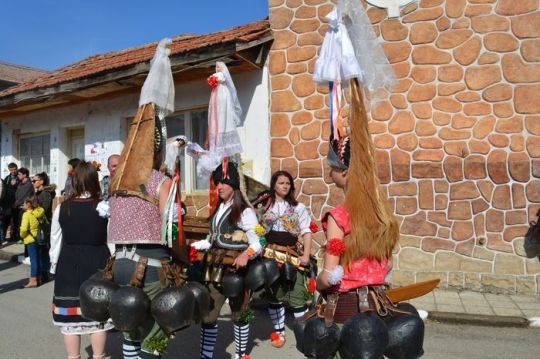
Unfathomable Horrors Unveiled
Conflicting Figures
Reports from various sources paint a harrowing picture of devastation and loss in the regions surrounding Philippopolis and Tatar Bazardjik. Mr. Baring’s forthcoming report is expected to document approximately fifty villages razed to the ground and nearly 15,000 lives lost. However, this figure is considered conservative, as French and Russian Consuls, along with railway officials, offer significantly higher estimates, suggesting over a hundred villages decimated and casualties ranging from 25,000 to 40,000. Shockingly, some claim the death toll to be as high as 100,000.
Overwhelming Horror
Once the staggering figure of 15,000 lives lost in just four days is acknowledged, further inquiry seems almost futile. The magnitude of suffering encapsulated in this statistic is unfathomable. Whether the higher estimates are accurate or not, the horror remains undiminished. It’s not the numerical increase that intensifies the horror but the gruesome details that accompany the carnage Turkey Sightseeing.
Heart-Wrenching Testimonies
Accounts from eyewitnesses provide chilling insights into the barbarity unleashed upon innocent civilians. The Greek Consul recounts the horrific fate of 12,000 women and children herded into Tatar Bazardjik, subjected to unspeakable atrocities. Stories emerge of desperate Bulgarian parents resorting to unthinkable acts, such as killing their own families to spare them from the brutality of the Bashi-Bazouks. German officials recount scenes of unimaginable cruelty, including the mutilation of men’s bodies left for animals to devour, the agonizing torment inflicted upon helpless children, and the brutal execution of a priest who witnessed the annihilation of his loved ones before enduring unspeakable torture himself.
Unimaginable Cruelty
The atrocities detailed in these accounts defy comprehension, plunging the mind into a realm of horror too ghastly to contemplate fully. Each narrative serves as a testament to the depths of human depravity and the unfathomable suffering endured by the innocent. As these chilling testimonies emerge, the urgency to address the heinous crimes perpetrated against humanity grows ever more pressing.
0 notes
Photo

Unfathomable Horrors Unveiled
Conflicting Figures
Reports from various sources paint a harrowing picture of devastation and loss in the regions surrounding Philippopolis and Tatar Bazardjik. Mr. Baring’s forthcoming report is expected to document approximately fifty villages razed to the ground and nearly 15,000 lives lost. However, this figure is considered conservative, as French and Russian Consuls, along with railway officials, offer significantly higher estimates, suggesting over a hundred villages decimated and casualties ranging from 25,000 to 40,000. Shockingly, some claim the death toll to be as high as 100,000.
Overwhelming Horror
Once the staggering figure of 15,000 lives lost in just four days is acknowledged, further inquiry seems almost futile. The magnitude of suffering encapsulated in this statistic is unfathomable. Whether the higher estimates are accurate or not, the horror remains undiminished. It’s not the numerical increase that intensifies the horror but the gruesome details that accompany the carnage Turkey Sightseeing.
Heart-Wrenching Testimonies
Accounts from eyewitnesses provide chilling insights into the barbarity unleashed upon innocent civilians. The Greek Consul recounts the horrific fate of 12,000 women and children herded into Tatar Bazardjik, subjected to unspeakable atrocities. Stories emerge of desperate Bulgarian parents resorting to unthinkable acts, such as killing their own families to spare them from the brutality of the Bashi-Bazouks. German officials recount scenes of unimaginable cruelty, including the mutilation of men’s bodies left for animals to devour, the agonizing torment inflicted upon helpless children, and the brutal execution of a priest who witnessed the annihilation of his loved ones before enduring unspeakable torture himself.
Unimaginable Cruelty
The atrocities detailed in these accounts defy comprehension, plunging the mind into a realm of horror too ghastly to contemplate fully. Each narrative serves as a testament to the depths of human depravity and the unfathomable suffering endured by the innocent. As these chilling testimonies emerge, the urgency to address the heinous crimes perpetrated against humanity grows ever more pressing.
0 notes
Photo
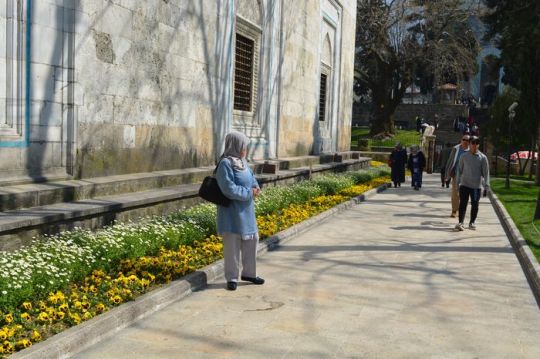
Evolution of the Bulgarian Economy
From Liberation to Soviet Influence
Introduction of Railroads and Trade Specialization (Second Half of 19th Century)
During the late 19th century, Bulgaria saw the construction of its first railroad between Russe and Varna. Urban centers like Gabrovo and Sliven specialized in manufacturing rifles, pistols, and iron tools, while the Rhodope area focused on producing aba cloth.
Economic Primitiveness under Ottoman Rule (Up to Liberation in 1878)
Until the Liberation in 1878, Bulgaria’s economy remained primitive by Western standards, being part of the Ottoman Empire’s economy. It had not been influenced by economic theorists like Adam Smith and David Ricardo. The inherited economy was in transition between a primitive (natural) economy, satisfying the producer’s needs, and a modern trade economy, meeting market demands.
Early Objectives of Post-Liberation Bulgarian Governments
The initial post-Liberation Bulgarian governments aimed for land redistribution, modernizing agricultural techniques, industrialization, and export growth. Progress toward these goals was hindered by the Balkan Wars and World War I. The economic strain of war and reparations after World War I brought Bulgaria close to ruin. Reforms during the Stambolisky government revitalized the economy, followed by stabilization under A. Liapchev’s government (1926-29). However, a totalitarian shift coincided with a new foreign policy orientation in 1934, with increased trade ties with Germany Guided Istanbul Tours.
Soviet Influence and Post-World War II Transformation
After World War II, Soviet occupation led to a radical transformation of the Bulgarian economy in line with the Bolshevik pattern. The land was collectivized, farms mechanized, and all sectors, including industry, trade, and banking, were nationalized.
Overview of Bulgarian Economic Development
This summary provides an overview of Bulgaria’s economic evolution, focusing on four main periods since Liberation. Subsequent discussions will delve into the major economic features of each period.
0 notes
Photo
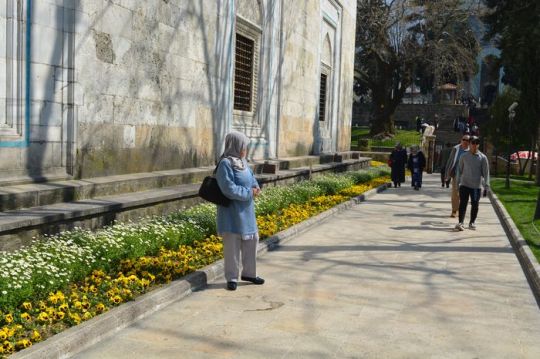
Evolution of the Bulgarian Economy
From Liberation to Soviet Influence
Introduction of Railroads and Trade Specialization (Second Half of 19th Century)
During the late 19th century, Bulgaria saw the construction of its first railroad between Russe and Varna. Urban centers like Gabrovo and Sliven specialized in manufacturing rifles, pistols, and iron tools, while the Rhodope area focused on producing aba cloth.
Economic Primitiveness under Ottoman Rule (Up to Liberation in 1878)
Until the Liberation in 1878, Bulgaria’s economy remained primitive by Western standards, being part of the Ottoman Empire’s economy. It had not been influenced by economic theorists like Adam Smith and David Ricardo. The inherited economy was in transition between a primitive (natural) economy, satisfying the producer’s needs, and a modern trade economy, meeting market demands.
Early Objectives of Post-Liberation Bulgarian Governments
The initial post-Liberation Bulgarian governments aimed for land redistribution, modernizing agricultural techniques, industrialization, and export growth. Progress toward these goals was hindered by the Balkan Wars and World War I. The economic strain of war and reparations after World War I brought Bulgaria close to ruin. Reforms during the Stambolisky government revitalized the economy, followed by stabilization under A. Liapchev’s government (1926-29). However, a totalitarian shift coincided with a new foreign policy orientation in 1934, with increased trade ties with Germany Guided Istanbul Tours.
Soviet Influence and Post-World War II Transformation
After World War II, Soviet occupation led to a radical transformation of the Bulgarian economy in line with the Bolshevik pattern. The land was collectivized, farms mechanized, and all sectors, including industry, trade, and banking, were nationalized.
Overview of Bulgarian Economic Development
This summary provides an overview of Bulgaria’s economic evolution, focusing on four main periods since Liberation. Subsequent discussions will delve into the major economic features of each period.
0 notes
Photo
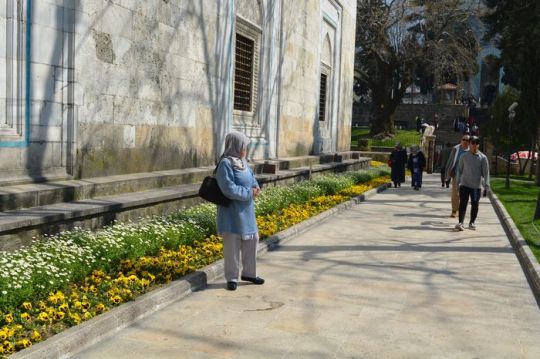
Evolution of the Bulgarian Economy
From Liberation to Soviet Influence
Introduction of Railroads and Trade Specialization (Second Half of 19th Century)
During the late 19th century, Bulgaria saw the construction of its first railroad between Russe and Varna. Urban centers like Gabrovo and Sliven specialized in manufacturing rifles, pistols, and iron tools, while the Rhodope area focused on producing aba cloth.
Economic Primitiveness under Ottoman Rule (Up to Liberation in 1878)
Until the Liberation in 1878, Bulgaria’s economy remained primitive by Western standards, being part of the Ottoman Empire’s economy. It had not been influenced by economic theorists like Adam Smith and David Ricardo. The inherited economy was in transition between a primitive (natural) economy, satisfying the producer’s needs, and a modern trade economy, meeting market demands.
Early Objectives of Post-Liberation Bulgarian Governments
The initial post-Liberation Bulgarian governments aimed for land redistribution, modernizing agricultural techniques, industrialization, and export growth. Progress toward these goals was hindered by the Balkan Wars and World War I. The economic strain of war and reparations after World War I brought Bulgaria close to ruin. Reforms during the Stambolisky government revitalized the economy, followed by stabilization under A. Liapchev’s government (1926-29). However, a totalitarian shift coincided with a new foreign policy orientation in 1934, with increased trade ties with Germany Guided Istanbul Tours.
Soviet Influence and Post-World War II Transformation
After World War II, Soviet occupation led to a radical transformation of the Bulgarian economy in line with the Bolshevik pattern. The land was collectivized, farms mechanized, and all sectors, including industry, trade, and banking, were nationalized.
Overview of Bulgarian Economic Development
This summary provides an overview of Bulgaria’s economic evolution, focusing on four main periods since Liberation. Subsequent discussions will delve into the major economic features of each period.
0 notes
Photo
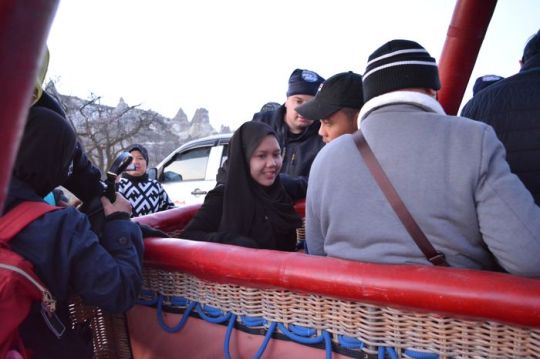
Bulgaria's Path to Democracy 1988-1990
Covert Opposition and the Emergence of the Union of the Democratic Forces (UDF)
Amidst the changing tides of 1988, Bulgaria’s Secret Services strategically worked to suppress any opposition movement that might naturally emerge. Unlike other Eastern European nations with pre-existing oppositions, such as Poland or Czechoslovakia, Bulgaria’s democratic movement, rallying under the slogan “Forty-five years are enough! Time is ours!” was led not by dissidents or anti-communists but by representatives of the totalitarian intellectual elite. The communists responded with a retort, asserting, “Time might be yours, but the money is ours!” This marked the swift transfer of public funds into the hands of newly affiliated businessmen loyal to the Party.
On December 7, 1989, sixteen opposition organizations, including former “non-formals” and reactivated pre-war parties, joined forces to establish the Union of the Democratic Forces (UDF). Driven by the “dissident” Zhelyo Zhelev, a Doctor of Philosophical Sciences, the UDF spearheaded mass rallies and public protests. These actions triggered a transformation in the leadership of existing public and political organizations, prompting most to undergo name changes. Even the Bulgarian Communist party felt the impact of democratization, rebranding itself as the Bulgarian Socialist Party (BSP), with internal factions emerging. Following the “gentle revolution” model in Czechoslovakia, the concept of a “peaceful transition from the totalitarian system to democracy” gained traction City Tours Istanbul.
The Round Table Conference and Democratic Agreements
In January 1990, mirroring the Polish example, the “reformed” communist government initiated a dialogue with the opposition, mainly composed of ex-communists and former functionaries from totalitarian structures. This took the form of a conference known as the “round table.” Intense debates at the round table resulted in agreements on crucial issues such as democratizing state institutions, enacting a law on political parties, restoring private property, guaranteeing human rights, privatizing, and introducing a market economy. As a direct outcome, the Zhivkov-led State Council was dissolved, and Petar Mladenov assumed the role of Bulgaria’s First President. This marked a pivotal step in Bulgaria’s journey toward democracy, guided by the principles of dialogue and compromise.
0 notes
Photo
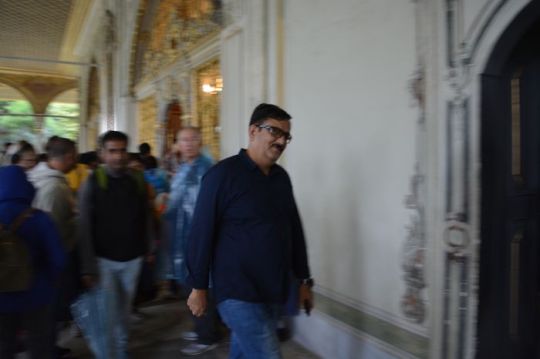
Perpetual Horrors Endured by Bulgarian Villagers
A Night of Tragedy in Tamboli
This article explores the distressing events that unfolded in Tamboli, shedding light on the tragic killing of a boy under mysterious circumstances. As we delve into the aftermath of this night, tales of violation, maltreatment, and arbitrary arrests surface, revealing the profound impact on the lives of Bulgarian villagers.
A Village in Desolation
From the ruins of Streletia, a village reduced to ashes, cries for justice emerge. Desperate villagers report an alarming reality — not a single day passes without Turkish assailants violating women. Streletia stands as a haunting symbol of the unchecked aggression that has left its people with nothing but the painful memories of their violated community.
A Daily Struggle Against Violence
In Mishka, the narrative continues with heartbreaking consistency. Two men approach, echoing the same story heard in Streletia — a relentless barrage of violence, especially targeting women. The recurring theme underscores the dire state of security, pushing Bulgarian villagers into a daily struggle against the specter of brutality.
A Glimpse into Arbitrary Arrests and Ransoms
Near Tatar Bazardjik, a group of men, bound together in pairs, becomes a poignant tableau of arbitrary arrests. Zaptiehs guard them, escorting them to an uncertain fate in Tatar Bazardjik. Investigations reveal the role of Ali Bey, an obscure authority figure, orchestrating the arrest of well-to-do individuals on dubious charges. Their imprisonment Bulgaria Tour, coupled with various forms of maltreatment, compels them to ransom their freedom at exorbitant rates — a stark illustration of the abuse of power in this tumultuous landscape.
Urgent Plea for Justice and Intervention
As the article concludes, a fervent plea for justice echoes through the testimonies of those who have endured unspeakable horrors. The call for intervention becomes urgent, urging local authorities, international bodies, and humanitarian organizations to address the escalating crisis. The pervasive culture of impunity must be dismantled to protect the vulnerable Bulgarian villagers from further atrocities.
Unmasking the Ongoing Tragedy
In a somber reflection, the article unmasks an ongoing tragedy, where Tamboli becomes emblematic of the larger plight faced by Bulgarian villagers. The narrative illuminates the shadows of fear, violence, and injustice that cloak these communities. It underscores the importance of global awareness and collaborative efforts to dismantle the oppressive structures allowing such atrocities to persist.
A Call to End the Nightmares of Tamboli
In a final call to action, the article urges the international community to rally against the darkness that haunts Tamboli and countless villages like it. It underscores the imperative to stand united against the violations and ensure that Tamboli’s night of tragedy becomes a catalyst for lasting change and justice.
0 notes
Photo

Diplomatic Chess
Unmasking Injustice in Otluk-kui
In the intricate dance of diplomacy and accountability, Mr. Schuyler’s strategic use of interpreters unveils a subtle yet powerful approach to addressing the grim realities of Otluk-kui. The encounter between Mr. Schuyler, the interpreters, and the Mudir exposes a diplomatic game played on the chessboard of justice.
The Tactical Interpreters Navigating Diplomacy’s Delicate Terrain
Amid the somber aftermath of the atrocities in Otluk-kui, Mr. Schuyler wielded the power of language through his two interpreters—a young Bulgarian with polished Turkish etiquette and a stern Greek named Antonio. Their roles extended beyond linguistic translation; they became instruments in Mr. Schuyler’s nuanced approach to addressing Turkish authorities. The choice of interpreter became a strategic decision, defining the tone of the conversation and influencing the reception of Mr. Schuyler’s messages.
The young Bulgarian, proficient in the art of polite discourse, was Mr. Schuyler’s envoy for amicable exchanges and diplomatic niceties. When commendations or compliments were to be conveyed to Turkish authorities, this interpreter gracefully presented Mr. Schuyler’s words. On the flip side, the Greek interpreter, Antonio, entered the stage when the message was less congenial. His harsh and emphatic Turkish delivery served as the tool for communicating displeasure or demanding accountability.
The Diplomatic Gambit Exposing Injustice Through Indirect Inquiry
The chessboard of diplomacy saw a strategic move when Antonio confronted the Mudir about the deplorable state of the roads in Otluk-kui. This indirect approach, rather than a direct accusation, compelled the Mudir to grapple with the pressing issue at hand. Antonio’s severe tone and the Consul Bashi’s apparent displeasure created an atmosphere of accountability Travel Bulgaria, prompting the Mudir to respond under the weight of scrutiny.
The Mudir’s defense, claiming a relatively short tenure, showcased the delicate balance of power dynamics. The chess game unfolded as Mr. Schuyler, through Antonio, continued to weave a narrative of concern. The Consul Bashi’s keen observation of the misery among the people became a focal point, challenging the Mudir to address the humanitarian crisis under his watch.
This tactical use of interpreters transformed the diplomatic exchange into a subtle yet impactful probe into the Mudir’s responsibility. By choosing the right linguistic tone, Mr. Schuyler delicately exposed the injustices, leaving the Mudir on uncertain ground and paving the way for a broader inquiry into the town’s plight.
As the diplomatic chess match continues, the role of interpreters becomes increasingly pivotal, revealing the nuanced strategies employed to confront and unmask the grim realities of Otluk-kui.
0 notes
Photo

PRINCIPAL SIGHTS IN CONSTANTINOPLE
The most remarkable things to be seen are: Mosques—St. Sophia, Ahmedieh, Suleimanieh and Chora Mosques, which are the four principal ones, and of which St. Sophia and Chora are of Byzantine architecture, and the other two Turkish. Other mosques to be seen are—SS. Sergius and Bacchus (St. Sophia the less), Mehmed Pasha’s mosque, Rustem Pasha’s mosque, and the Valid eh mosque, the last three having beautiful tiles.
Tombs—The tomb of Sultan Selim II., of Sultan Mahmud II., of Suleiman the Great, the tomb of Shah-Zadeh, and of Sultan Muhammad II., the Conqueror. Museums —The Imperial Museum of Antiquities, the Church of St. Irene, the Treasury (in the Old Seraglio), the Museum of Ancient Costumes (in the Hippodrome), and Yildiz Palaces and Gardens (see p. 159) Obelisks and Columns. The Obelisk of Theodosius, the Serpent Column, and the Colossus in the Hippodrome, the Porphyry or Burnt Column, Marcian’s Column, the Column of Theodosius II., and the Column of Arcadius. Cisterns—The Philoxenos,
and the Basilica. Walls—The Seven Towers and the Walls of Constantinople. Bazaars—The Grand Bazaar and the Egyptian Bazaar. Processions—The Selamlik, the Procession of the Holy Camel, the Sultan’s procession to the Hirka-i-Sherif Mosque in the old Seraglio every 15th of Ramazan. Excursions—The Golden Horn, the Bosporus, the Forest of Belgrade, the Sweet Waters of Europe, the Sweet Waters of Asia, the Princes’ Islands, and Brusa.
The Bazaars: Shopping.—The bazaars are situated at Stambul private istanbul tour, between the second and third hills, i.e. between the Burnt Column and the Stambul fire tower. They cover an area of several acres, and consist of long, narrow, vaulted streets, roofed by small domes admitting the light through small windows and bull’s-eyes.
Byzantine era
With the exception of the central part called the “ Bezesten,” which dates from the Byzantine era, the bazaars were built by Sultan Bayazid II. about 1500 A.D. They are reached through more than one hundred entrances, and are occupied only in the daytime. The total number of the shops, which are not State property, but are owned by individuals, is about 4000.
Tourists and visitors shopping in the bazaars, or at any of the native shops, should not pay the price asked, as, except at some of the large shops where the prices are fixed, tradesmen are in the habit of asking high prices of strangers. A golden rule is to offer one-third of the prices asked at curiosity shops, and give a little more only when one is sure his firs offer will not be accepted. The prices asked vary according to the amount of notice a customer may bestow on any article shown him. A refusal on the dealer’s part to take the price offered him means nothing, and if a customer leave the shop, he will invariably find the tradesman at his heels, and ready to close with his offer, before he has gone many yards farther on.
Hans.—-These, numbering some 180, are, for the most part, large square buildings enclosing a courtyard, originally erected by different sultans and private individuals, for the accommodation of Turkish and other merchants and travellers. Only men are allowed to dwell in them. A great many European merchants or their agents now have their offices and warehouses in these Hans. The massive iron-plated doors are always closed at sunset and are not opened till sunrise. The two largest Turkish Hans are the Buyuk Yeni Han and Yalideh Han, near the Bazaar and War Office. They suffered considerable damage during the earthquakes of July 1894.
The Selamlik or Sultan’s Procession to the Mosque takes place every Friday about noon. Visitors are allowed to go near the Mosque where the Sultan is to go and see him driving in state, as well as the various troops which come for the parade. It is unnecessary to wait and see him again when he comes out of the Mosque as the time he stays there is uncertain. Tourists can view the whole procession from their carriage, or enter into the courtyard of the Mosque in which the ceremony is going to take place, and thus see hiih and the Palace courtiers as well as the various generals from near.
Dervishes. — Whirling or Dancing Dervishes. The best Mevlevi, or Dancing Dervishes, are to be seen at their convent, 539 Grande Kue, near the Pera terminus of the Underground ltailway. Performance on Fridays, at 8.30 (Turkish time) throughout the year. Entrance 2\ piastres per head (5d.). Visitors are expected to take off their hats. Sticks, umbrellas, and kodaks must be left at the door in charge of the doorkeeper. Sketching or taking notes is not allowed.
This order of Dervishes was founded in 1245 A.D. by Mevlana Jellal-ed-din Muhammad, a descendant of the prophet’s father-in-law, Abu-bekr, 4
Every member has to perform a severe novitiate, lasting 1001 days, before being finally admitted into the order. Their gyrating dance is intended to personify the planetary system revolving round the sun, and is supposed by many to be a survival of Hindu mysteries.
0 notes
Photo

ZLATYU BOYAJIEV' PERMANENT EXHIBITION
ZLATYU BOYAJIEV’ PERMANENT EXHIBITION
(Stoyan Chomakov House), 18 Saborna Street
The exhibition displaying the work of the great artist Zlatyu Boyadjiev (1903 – 1976) was opened in 1980 in this representative period-house. The multitude of canvases, some of imposing size, is displayed in all rooms of the big two-storey house. In the courtyard in front of the house there is monument to the honoured artist .
The noble Revival house, where the exhibition has been set out, was built for Dr. Stoyan Chomakov in 1860. It was a very modern-looking house for its time although it was a solid sym-metrically designed building with facades decorated in the classical style widely spread in Europe at the time. Dr.Chomakov was one of the first academically trained physicians in Plovdiv and was a champion for an autonomous Bulgarian church in the Revival bulgaria private tours.
After the Liberation the heirs gave the house as a present to King Ferdinand. In the 50s of the 20th c. it housed a branch of the Ivan Vazov Public Library until the time it was entirely renovated and given over for the setting up of the exhibition of the works by Zlatyu Boyadjiev.
‘GEORGI BOJILOV – SLONA’ PERMANENT EXHIBITION
(Skobelev House), 1 Knyaz Tseretelev Street
This Revival house is adjacent to the Hippocrates Pharmacy. Kostadin Kaftanjiyata, a Bulgarian from the town of Stara Zagora, built it in the 60s of the 19th century. In the years after the Liberation and until her death here lived Olga Sko- beleva (1823 -1880), mother of the Russian General Skobelev. She became known for her charity work in aid of the victims of the Turkish atrocities in South Bulgaria during the April Rising and the Liberation War. In gratitude for her concern for the orphaned children in Thrace, the Bulgarians have called her ‘Mother Skobeleva’. A memorial park has been dedicated to her off the Istanbul highway in the outskirts of Plovdiv.
At present the house is occupied by the Plovdiv branch of the ‘Future for Bulgaria’ Foundation. It was with the contribution of the foundation that in 2003 a permanent exhibition of the work of the prominent artist Georgi Bojilov-Slona was arranged. The end-wall of the house, facing Saborna Street is decorated with a commemorative panel dedicated to the artist and executed in paintings and mosaics to the design of Dimiter Kirov.
Apart from the period houses of great artistic and architectural value, Old Plovdiv possesses some buildings of lesser architectural merit but associated with significant events in the past. These are historic places marked with commemorative inscriptions. On Saborna Street opposite the Holy Virgin Cathedral stands the house of Dr. Rashko Petrov, a physician with a medical degree and a prominent revolutionary, who participated in the First Bulgarian Legion in Belgrade in 1862.
There he became friends with Vasil Levski – the ‘Apostle of Liberty’, who often stayed at Dr. Petrov’s house when in Plovdiv. Right after the Liberation War in 1878 the house was the seat of the interim Russian representation headed by the Imperial Commissioner Prince Alexander Dondukov-Korsakov. Next-door to Dr Rashko’s place is the house where Dr Konstantin Stoilov, an eminent Bulgarian politician and statesman, Prime Minister of Bulgaria from 1894 to 1899, was born.
0 notes
Photo
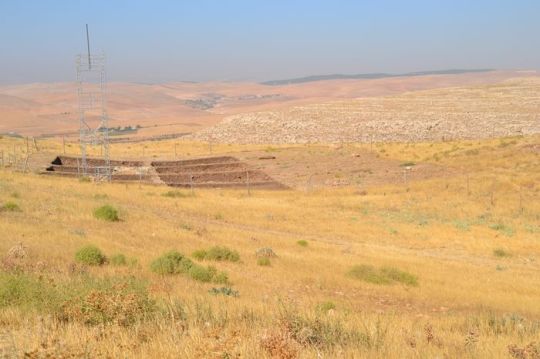
THE BULGARIAN BLACK SEA
The Black Sea is a half-enclosed kidney-shaped sea linked with the Mediterranean by the Bosphorus and the Dardanelles.
It is bounded on the west by the Balkan Peninsula, on the north and east by the Russian plain and the Caucasus and on the south by the coast of Asia Minor in Turkey. It has low salinity and a high transparency — up to 16-20 m at an average depth of 1,690 m. The temperature of the water in summer averages 23° C.
The Bulgarian coastline (378 km) is less indented than the eastern and southern parts, but is very picturesque. The woody, gentle slopes of the Balkan and Strandja Mountains are covered with vineyards, orchards, trees and shrubs, and are known as the Bulgarian Riviera. Along the entire coast is an almost unbroken strip of fine sand and the sea is clean and shallow sightseeing turkey. Holiday resorts range from old and romantic fishermen’s settlements to the most modern complexes — all with lush greenery, fine sand and clear sea.
Nesebar
SHABLA – KAVARNA – BALCHIK – ALBENA – GOLDEN SANDS – DROUZHBA – VARNA (109 km)
Dourankoulak is the first Bulgarian village associated with the peasant revolt of May 1900. East of the village is Dourankoulak lake abounding in fish The large island in the lake has remains from various historical periods from the Stone Age to the 9th-11th century. Between the village and the beach is the Cosmos camp site for 500 tourists. There is a restaurant at the camp site.
South of Dourankoulak and 24 kilometres from the border is the town of Shabla (pop. 5,000). There was a Thracian settlement here in the 6th-5th century B.C. and it was a seaport in Roman times. The people of Shabla took an active part in the 1900 peasant revolt. About five kilometres east of the town is the Shabla Touzla, a tiny lake separated from the sea by a strip of sand. Its radioactive mud has curative properties. The Dobroudja camp site has a restaurant and a shop.
A road forks from Shabla leading to the sea. After about six kilometres it turns south along the coast to the village of Tyuelenovo, near which are several caves cut into the rocks by the sea and several colonies of seals have taken refuge here. Near the village of Kamen Bryag is the picturesque area of Yal] at a with beautiful rocks and caves. There is an ancient fortress and other interesting architectural and natural places.
0 notes